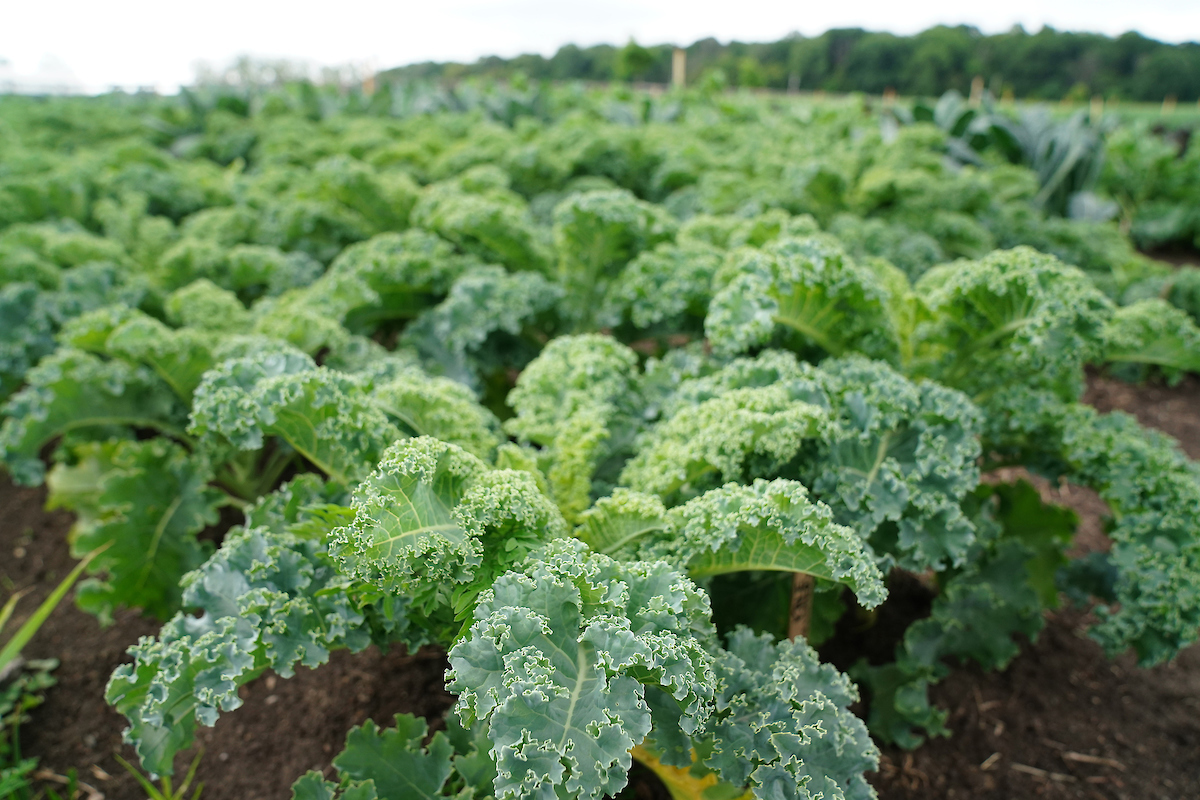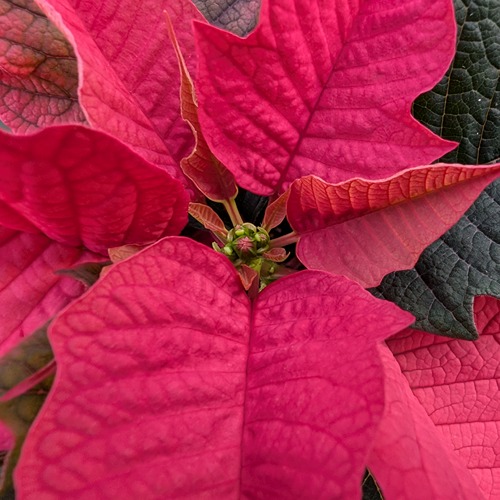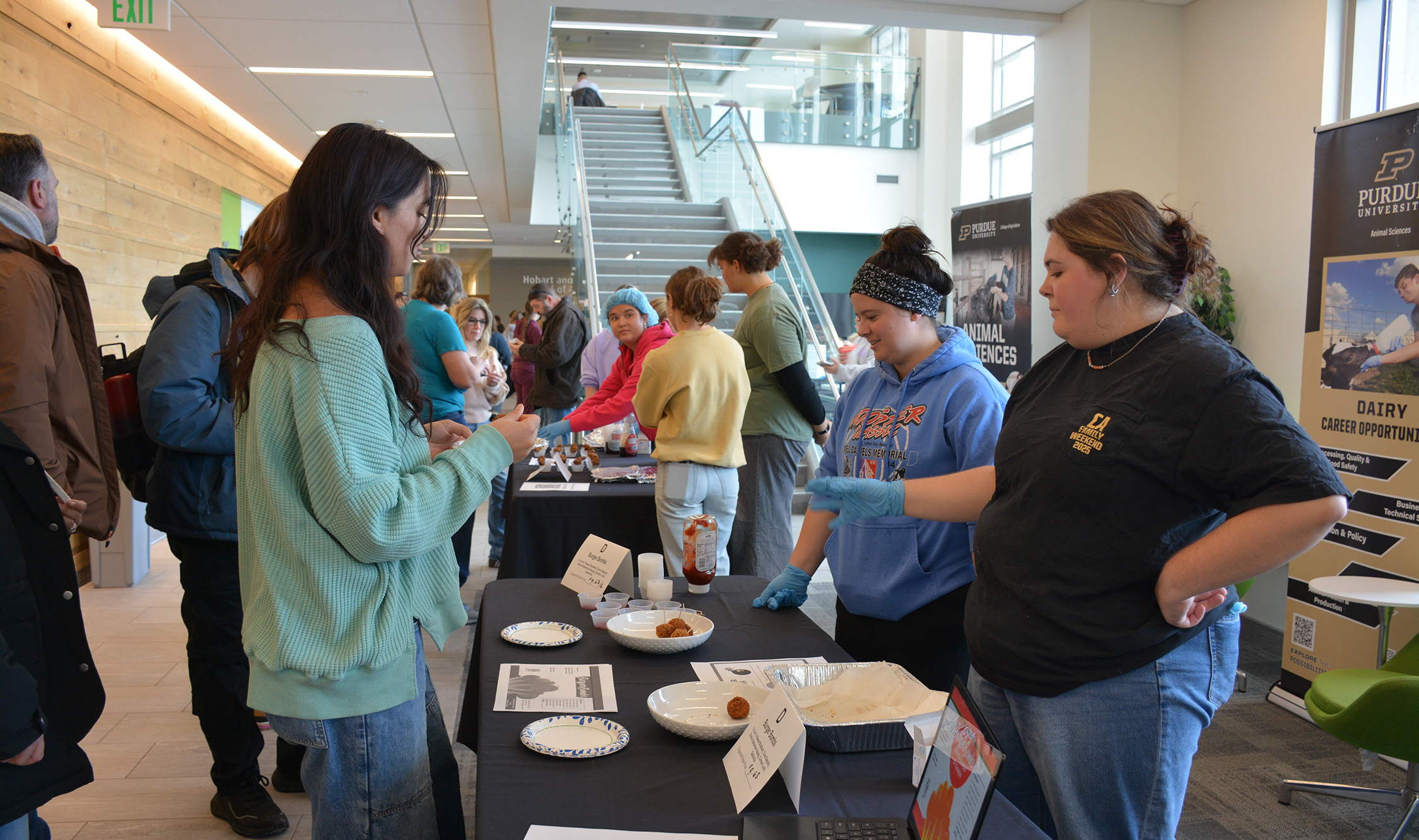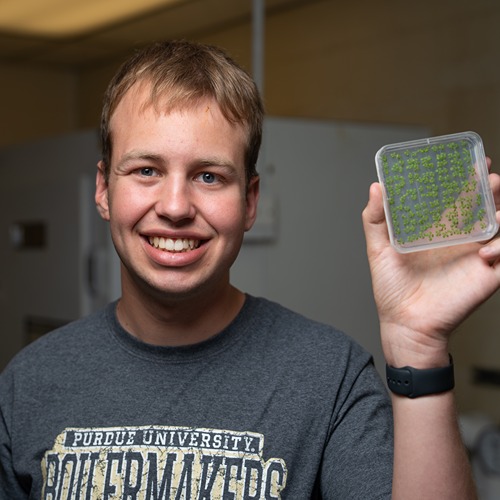From lawn care to gardening, keeping thumbs green through the fall is a must
The sun is setting earlier, temperatures are dropping and the countdown to the final mow of the year is on. But the start of the fall season isn’t the time to put the brakes on caring for your green spaces, according to Purdue experts.
Starting in September, lawn caretakers have roughly 60 days of ideal growing weather left for their yards, explains Cale Bigelow, professor of horticulture and landscape architecture. Turf varieties that continue to grow well into fall include tall fescue, Kentucky bluegrass and perennial ryegrass.
When temperatures start to drop, many plants respond by storing carbohydrates. Bigelow said this time frame is best described as “maximizing the plant’s savings account,” as they prepare for dormancy until the next year’s growing season begins. Knowing plants are working to harbor nutrients, the fall season is one of the best times to apply fertilizer.
 A lawn space composed of several squares of grass offers examples of high-quality and low-quality perennial ryegrasses. Photo provided by Cale Bigelow
A lawn space composed of several squares of grass offers examples of high-quality and low-quality perennial ryegrasses. Photo provided by Cale Bigelow “Granular fertilizer is best to be applied around or after Labor Day, which will allow for around five weeks of feeding from that application,” Bigelow explains. “Come Halloween time, you’ll want to revisit your lawn to apply a highly water-soluble fertilizer, like urea-based fertilizer, which will give your yard more energy for next year.”
Using this feeding schedule for lawns will maximize photosynthesis abilities, allowing the grass to put ample carbohydrates into its “savings account” over the winter months. Bigelow said the timed fertilizer applications will also keep grass looking healthy and green often well into December.
With continued feeding comes continued growth. Bigelow explains keeping lawns cut at three inches tall is optimal while also ensuring your lawn doesn’t get smothered by falling leaves. For lawns needing a bit of reseeding, mid-September to mid-October offers a good window of opportunity. That time frame also allows for preventive weed control.
“Even healthy lawns sometimes have weeds,” Bigelow said. “The first two weeks of October is one of the best windows to contain and suppress broadleaf weeds with herbicides.”
Maintaining your lawn can have some benefits for your garden, too, according to Purdue Student Farm manager Chris Adair. Instead of bagging all of the lawn clippings after a round of mowing, sprinkling some of the clippings over cleaned-out garden beds can work well as mulch.
“This is great to do before you spray any herbicides, so you aren’t transferring that application into your garden beds,” Adair said. “Grass clippings can be a really nice way of introducing a relatively consistent supply of nutrients, especially nitrogen, into your soil for the next growing season.”
Before applying your lawn clippings, cleaning garden beds of dead plants from the summer is important, Adair explains. Plants like tomatoes and bell peppers can harbor diseases. If left to decompose in the soil over winter, old plants can cause serious harm to new tomato and pepper plants when planted in the spring.
“A lot of home gardeners are unaware, but rotating where crops are planted each year is important,” Adair said. He adds that not doing this “can lead to a lot of confusion for gardeners when they wonder why particular crops aren’t doing well, which can lead to unnecessary application of pesticides or fertilizers.”
 Kale plants are ready for harvest at the Purdue Student Farm and will continue growing sweeter into colder weather.
Kale plants are ready for harvest at the Purdue Student Farm and will continue growing sweeter into colder weather. For gardeners looking to keep growing for as long as possible, Adair suggests kale be their go-to crop. The leafy greens will continue to flourish into December, with potential for January as well, due to the plant’s lower freeze point. So long as extreme weather holds off, kale will continue to grow sweeter with gradual temperature decreases.
For more information on caring for yards and green spaces, download Purdue Extension’s Turf Doctor App available for Apple iOS and Android devices, or visit purdueplantdoctor.com.





